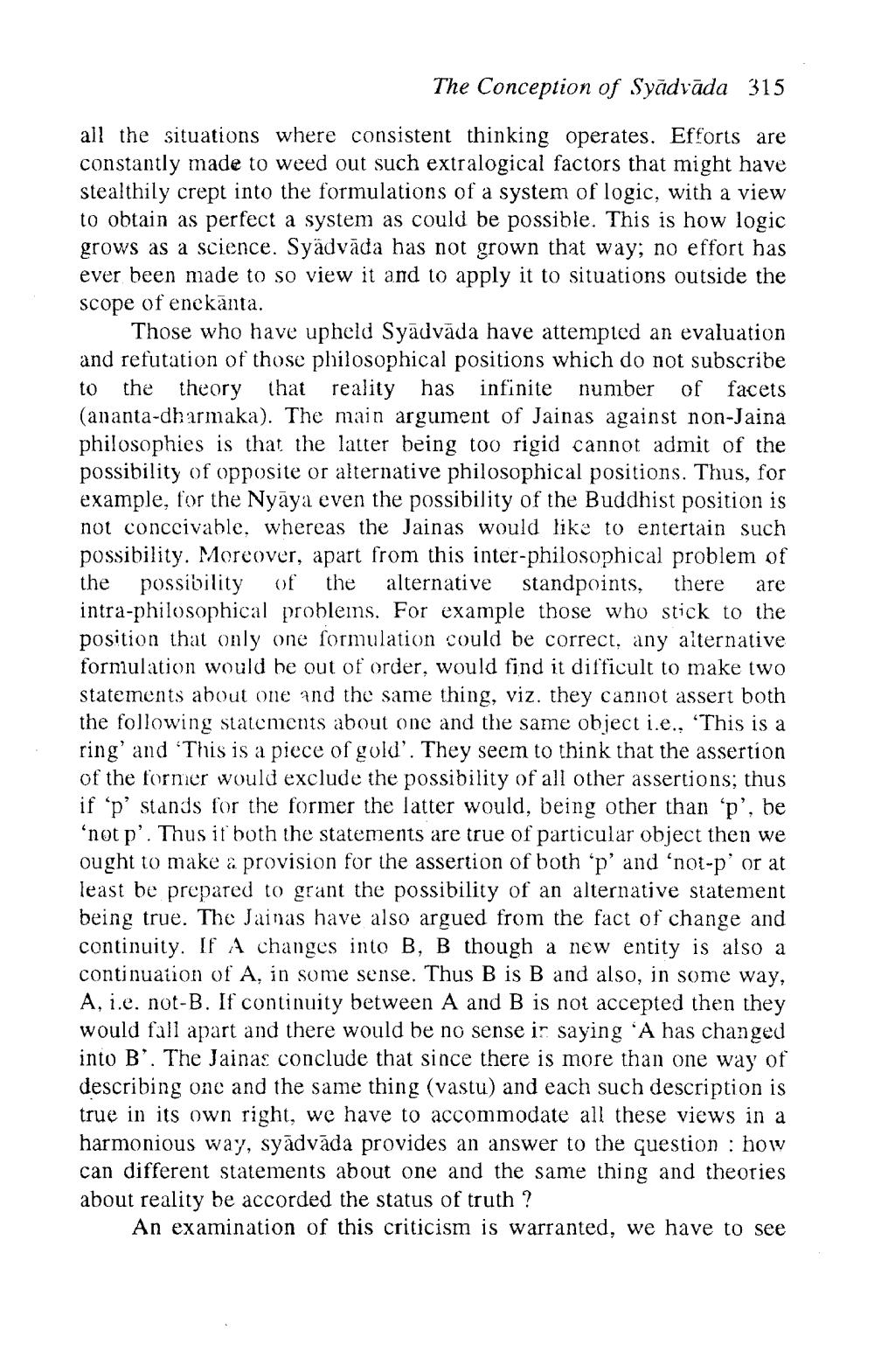________________
The Conception of Syādvāda 315
all the situations where consistent thinking operates. Efforts are constantly made to weed out such extralogical factors that might have stealthily crept into the formulations of a system of logic, with a view to obtain as perfect a system as could be possible. This is how logic grows as a science. Syädvāda has not grown that way; no effort has ever been made to so view it and to apply it to situations outside the scope of enekānta.
Those who have upheld Syādvāda have attempted an evaluation and refutation of those philosophical positions which do not subscribe to the theory that reality has infinite number of facets (ananta-dharmaka). The main argument of Jainas against non-Jaina philosophies is that the latter being too rigid cannot admit of the possibility of opposite or alternative philosophical positions. Thus, for example, for the Nyāya even the possibility of the Buddhist position is not conceivable, whereas the Jainas would like to entertain such possibility. Moreover, apart from this inter-philosophical problem of the possibility of the alternative standpoints, there are intra-philosophical probleins. For example those who stick to the position that only one formulation could be correct, any alternative formulation would be out of order, would find it difficult to make two statements about one and the same thing, viz. they cannot assert both the following statements about one and the same object i.e., 'This is a ring' and 'This is a piece of gold'. They seem to think that the assertion of the former would exclude the possibility of all other assertions; thus if 'p' stands for the former the latter would, being other than 'p', be ‘not p'. Thus it both the statements are true of particular object then we ought to make a provision for the assertion of both 'p' and 'not-p' or at least be prepared to grant the possibility of an alternative statement being true. The Jainas have also argued from the fact of change and continuity. If A changes into B, B though a new entity is also a continuation of A, in some sense. Thus B is B and also, in some way, A. i.e. not-B. If continuity between A and B is not accepted then they would fall apart and there would be no sense ir saying 'A has changed into B'. The Jainas conclude that since there is more than one way of describing one and the same thing (vastu) and each such description is true in its own right, we have to accommodate all these views in a harmonious way, syādvāda provides an answer to the question : how can different statements about one and the same thing and theories about reality be accorded the status of truth?
An examination of this criticism is warranted, we have to see




